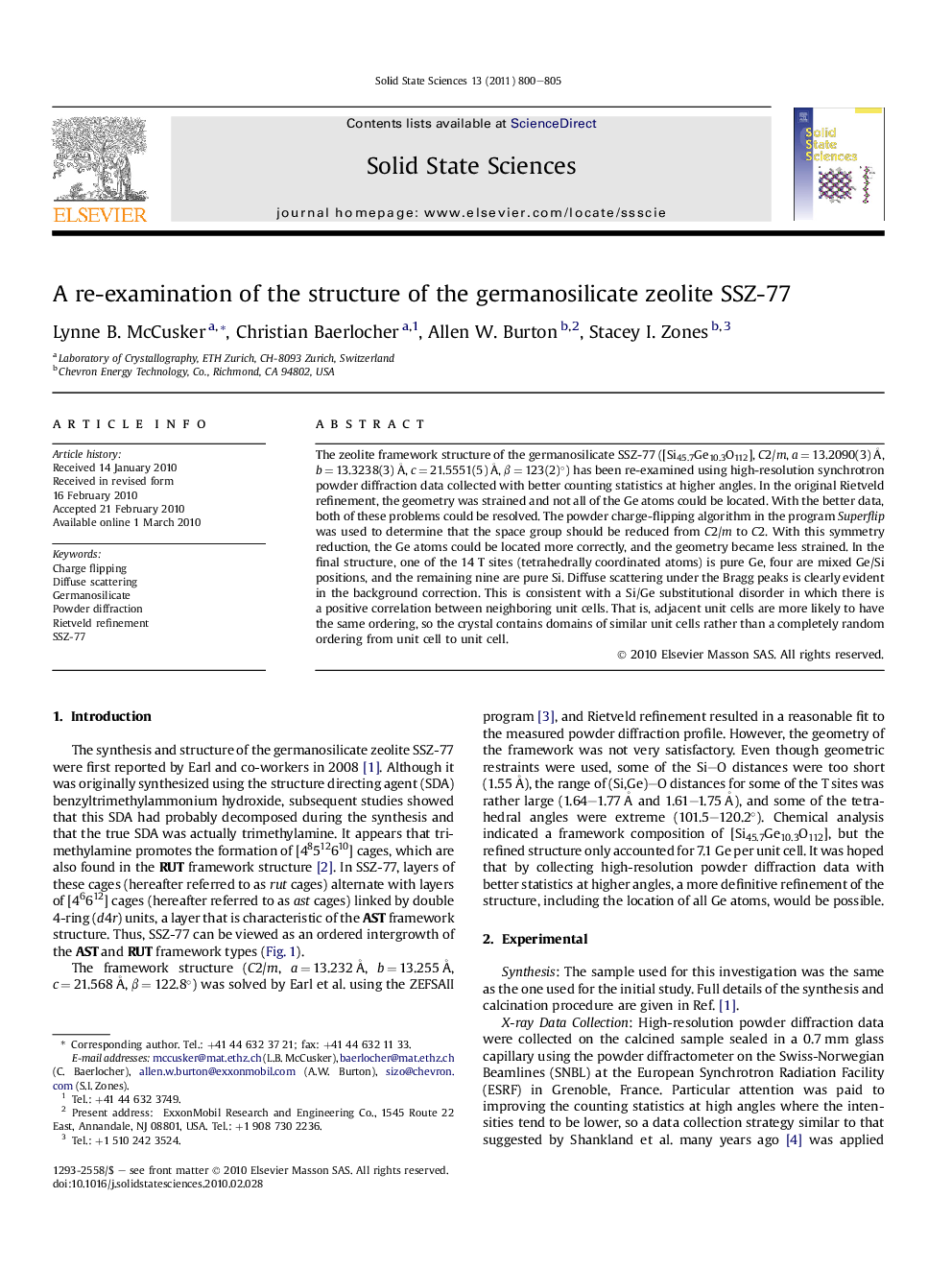| Article ID | Journal | Published Year | Pages | File Type |
|---|---|---|---|---|
| 1505836 | Solid State Sciences | 2011 | 6 Pages |
The zeolite framework structure of the germanosilicate SSZ-77 ([Si45.7Ge10.3O112], C2/m, a = 13.2090(3) Å, b = 13.3238(3) Å, c = 21.5551(5) Å, β = 123(2)°) has been re-examined using high-resolution synchrotron powder diffraction data collected with better counting statistics at higher angles. In the original Rietveld refinement, the geometry was strained and not all of the Ge atoms could be located. With the better data, both of these problems could be resolved. The powder charge-flipping algorithm in the program Superflip was used to determine that the space group should be reduced from C2/m to C2. With this symmetry reduction, the Ge atoms could be located more correctly, and the geometry became less strained. In the final structure, one of the 14 T sites (tetrahedrally coordinated atoms) is pure Ge, four are mixed Ge/Si positions, and the remaining nine are pure Si. Diffuse scattering under the Bragg peaks is clearly evident in the background correction. This is consistent with a Si/Ge substitutional disorder in which there is a positive correlation between neighboring unit cells. That is, adjacent unit cells are more likely to have the same ordering, so the crystal contains domains of similar unit cells rather than a completely random ordering from unit cell to unit cell.
Graphical abstractFigure optionsDownload full-size imageDownload as PowerPoint slide
